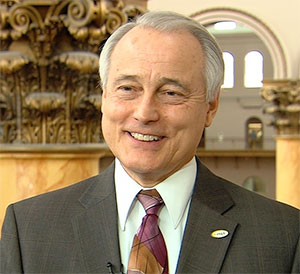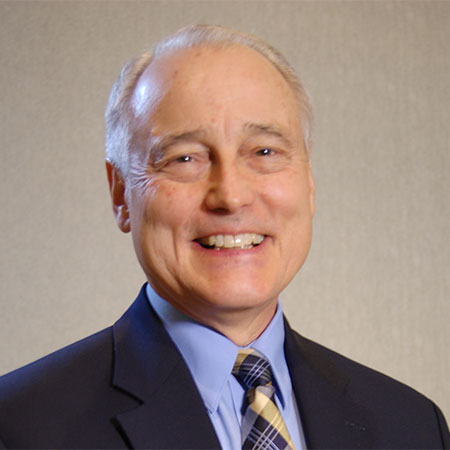A “super panel” of eight experts at the U.S. Department of Energy’s 10th annual Solid-State Lighting Technology Development Workshop, held last November in Portland, OR, discussed the seismic shift taking place in the industry. James Brodrick’s February column in LD+A summarized the discussion.
Four of the panelists described cutting-edge products that are already on the market, and how their features might change the way we design and construct buildings. Gary Trott of Cree focused on the CCT-adjustable CR Series troffer, which offers a SmartCast feature that automatically groups fixtures across a network. He observed that there are two lighting revolutions–one involving the conversion of incumbent technology to LED, and the other involving the introduction of lighting products that do far more than just deliver light. But he pointed out that we’re still in the first revolution, and that the second revolution is a “huge leap” from where we are today, because the industry still has quite a bit of foundational work to do in the area of basic lighting intelligence–namely controls, which remain a challenge. One of the biggest problems with lighting controls–which we heard a lot at the Portland workshop–is that they can be quite complicated to install and commission, as well as to use. Trott cited simplicity as the key to unlocking the second lighting revolution: “It’s very easy to make things complicated, but very hard to make them simple.”
Yan Rodriguez of Acuity Brands discussed his company’s use of DC microgrids to boost efficiency and reduce installation costs. The idea is to centralize the power somewhere on the wall or ceiling rather than include it with each luminaire. Rodriguez said this not only results in a 7 percent boost in efficiency – by eliminating AC-to-DC conversion losses at each individual luminaire–but also in a 90 percent drop in installation costs, mainly because with DC microgrids, most of the wiring is low-voltage and thus can be done by someone other than an electrician. He said most of Acuity Brands’ luminaires have the ability to accommodate this feature, but noted that Energy Star and DesignLights Consortium are based on AC power, and that at present there are no incentives to allow a concept such as DC microgrids to be easily adopted.
Panelist Chris Bailey of Hubbell Lighting talked about ArcheType X, an outdoor-application optical platform his company created that allows the optics to be adjusted to provide the desired intensity distribution. He explained that the platform grew out of the fact that with outdoor lighting, site conditions aren’t always conducive to IES distributions, which results in a certain amount of wasted light, and that LEDs provide an opportunity to harness the light much more efficiently. But instead of resorting to a variety of static optics, Hubbell developed a faceted LED array that eventually evolved into ArcheType X, which allows users to create their own distribution by rotating individual optics inside the optical cavity by as much as 355 deg from the axis and tilting the optics from 0 deg up to 70 deg. The result, Bailey said, is not only user-defined performance and site-specific distributions, but a 10-30 percent energy reduction and increased pole spacing.
A similar effect, but using completely different methods, can be seen with OSRAM SYLVANIA’s OmniPoint downlight. Panelist Lori Brock of OSRAM explained that the product consists of an array of 60 LEDs, each one individually addressable and pointed in different directions, so that users can easily adjust the beam angle, direction, distribution and intensity using an iPad application that switches various LEDs on and off depending on the output desired. She invited the audience to imagine a future in which luminaires similar to the OmniPoint are equipped with a variety of sensors that allow them to recognize what kind of light output is needed and automatically adjust it accordingly, and said such technology is possible within the next 10 years.
IN PRACTICE
The other four panelists helped put these cutting-edge developments in a practical context. Ed Clark of ZGF Architects talked about how new product capabilities will affect architectural design, and emphasized the importance of having generational consistency, so that individual products and components can be replaced without having to replace the entire system or luminaire. Observing that he encounters a lot of “fear-based” pricing because contractors who are not sure how to install something bid to cover unplanned installation and commissioning costs, he predicted that an entirely new industry will arise to fill the gap of implementing advanced lighting systems.
Dave Bisbee of Sacramento Municipal Utility District described how the lighting paradigm is changing for utilities. Observing that the days of high rebates and big energy-saving plans are coming to a close because of the steadily increasing efficiency of LED lighting products, he noted that utilities need new ways to motivate their customers to save energy and thus are starting to expand their focus to include ways they can help them use these emerging lighting technologies. Bisbee called on lighting manufacturers to develop solutions that “real people” care about, and added that simplifying and centralizing the rebate programs would also help speed adoption.
Rob Fallow of Fortis Construction emphasized the growing need for contractors to be educated on new lighting products and how to install and commission them. He noted that LED lighting products have come down significantly in price over the past two years and, in some cases, are now even cheaper than their fluorescent counterparts. Fallow observed that whereas two years ago LED fixtures posed a potential procurement problem, nowadays there’s no difference between them and fluorescent fixtures in terms of lead time, but he stressed the importance of accurate lead-time estimates, explaining that if a product doesn’t arrive when planned, an alternative product is used in its place. He said that for the most part, LED fixtures don’t add labor cost compared with fluorescent fixtures, unless remote drivers are involved, but power-over-Ethernet fixtures can entail significant additional installation costs.
Chip Israel of Lighting Design Alliance noted that he hasn’t seen any client demand for color-tuning just yet, and cautioned that if controls don’t work simply and effectively, clients will avoid buying them for many years to come. He said that although he didn’t specify many LED products a few years ago, that’s changed 180 degrees, thanks to new energy-efficiency regulations and improvements in the price and performance of LED products.
But the overriding takeaway from the Portland workshop (whose presentations can be found at https://energy.gov/eere/ssl/2015-ssl-technology-development-workshop-presentations-and-materials) was that, like it or not, the lighting revolution has already started to cause significant changes that are just a precursor of what’s to come–which leaves industry with little choice. As Yan Rodriguez put it, “you either transform or you’ll go away.”
February 2016


